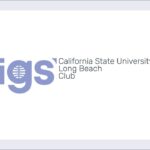
Our French Chapter has been a long-time champion of geosynthetics use and understanding. Chapter President and IGS Vice President Nathalie Touze shares the group’s work so far and ambitions for the future.
When was your chapter formed?
“The French ‘chapter’ was founded in 1979, before the IGS officially existed. It should therefore not be a surprise that the first conference on geotextiles took place in Paris! We joined the IGS as an official IGS chapter in 1993.”
How many members do you have?
“The French chapter has six corporate members, plus 130 individual members from 75 different companies, universities or public institutes and 13 retired or student members.”
What is the range of members?
“The youngest members are PhD students, and the oldest member is certainly Jean-Pierre Giroud, (whose IGS membership number is ‘1’) but it would not be correct to give his age! We have manufacturers, designers, installers, controllers, testing labs, universities, public research institutes and professional associations, like certification body ASQUAL (Association Qualité).”
What are you proud of in the chapter?
“There are many things we are pleased to have pioneered, provided and developed. These include:
- Being heavily involved in standardization at national, European and international levels, and offering financial support to fund those involved in public research or testing institutes to attend the corresponding meetings.
- Certification of geotextiles and related products since 1990 and geomembranes since 1996 under the ASQUAL umbrella.
- Coordination of the French chapter (CFG) with other national associations such as AFAG (the French association of geomembrane installers), AFPGA (French association of geotextiles and related products manufacturers) and APRODEG (French association of geomembrane manufacturers).
- Mirroring the structure of FedIGS, coordinating the French chapter with the French societies for soil mechanics, rock mechanics, and engineering geology. Building a strong collaboration with a national journal, Revue Française de Géotechnique, in which a French version of the Giroud Lecture was published. You can read it here.
- As the leading French-speaking country, supporting the development of geosynthetics in French-speaking Africa and especially North Africa with strong interactions with the Moroccan chapters and a Tunisian interest group that should soon form a chapter.
- Sharing for free all material (especially guidelines) on the IGS website and translation into English of the most recent ones to make them available to the community at large.”
Tell us about some of your chapter activities.
“Our regular events include:
- A biennial technical day.
- A biennial three-day French-speaking conference started in 1993. The last one took place in Nancy, a city with a long history of textiles and geosynthetics. The next one will be in Saint Malo. You can find out more here. All papers are made available for free online since proceedings went digital in 2006.
- Producing and updating many guidelines to promote the proper use of geosynthetics.”
Do you have a Youth section? If so, what sort of initiatives do you have available for younger members?
“A Youth section is something we are working on creating. It’s important younger voices lead on initiatives and actions. In the meantime we do offer younger members discounts on conference registration fees.
We also promote our younger members’ PhD work to the public by announcing when the defences are going to take place. It is great exposure for the student and offers opportunities for employment. For an example, see our website page here. In addition, from this year, we want to produce videos of the PhD thesis defences. Indeed, because of the COVID-19 crisis the defences have to take place through online tools.
This year we are funding a second student to attend EuroGeo 7, in addition to the opportunity available through the IGS Student Award.”
How would you describe the level of adoption / understanding about geosynthetics in your region?
“There is still some progress to be made, especially through education, but we’re working on it through the development of courses for professionals. The French contracting bodies and the designers are aware of the advantages of the use of geosythetics, even if courses are still necessary to ensure there is the relevant awareness for those new to the world of geosynthetics.”
Where are the areas of most opportunity?
“We’re really excited with several projects in the pipeline. These include the Canal Seine Nord Europe, a project to link the Oise River with the Canal Dunkerque-Escaut, and the Grand Paris project, which is four new Metro lines for the Olympic Games 2024. Additionally, European regulations that make geosynthetics use mandatory in landfills, in particular geomembranes, offer us opportunities.”
What type of products have good adoption / less adoption?
“Geomembranes, in relation to the regulation on waste, and geosynthetic materials for road construction as it is a major market with geogrids and geotextiles.”
Are there any notable facts about the market or the chapter?
“Research and development, knowledge and feedback are driving the manufacturers to adapt more and more geosynthetics solutions to specific products and functions, in better line with sustainable development and environment preservation.”
Are there any notable projects in the region that have used geosynthetics?
“There are many different projects; it’s hard to choose. Among the first projects, 50 years ago is the Valcros Dam on which various papers were recently published. There is also some literature on past projects of reinforced walls. We have a long history of geosynthetics use in France.”
Is there anything else you’d like to add about geosynthetics use in your area?
“I think being aware of the main civil engineering contractors and their project managers is key to the development and improvement of geosynthetics. It is definitely an area for improvement and progress.”

This article was featured in the IGS Chapter Chat. Chapter Chat is a quarterly publication released by the International Geosynthetics Society. Each edition shines a spotlight on the work of the IGS’s 47 worldwide chapters. The Summer version of Chapter Chat also features profiles on the Portuguese, Australasia, and Thai chapters, and includes a round-up of global chapter news and events. To read the 2020 Summer Chapter Chat, please CLICK HERE and please remember to share the issue via your social media profiles.





















